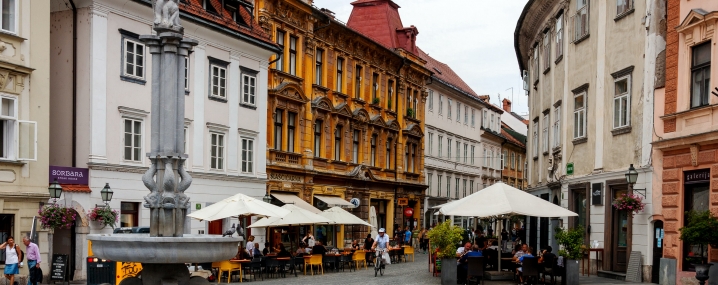Cáceres
The city of Cáceres is located in the province of Cáceres, in the Extremadura region of western central Spain. The city has a continental climate which is tempered by its proximity to the Atlantic Ocean. In winter the average temperature does not exceed 14 °C (57 °F) maximum, reaching 8 °C (46 °F) minimum, with some frost. In summer the average maximum temperature is 34 °C (93 °F) and the average minimum is 19 °C (66 °F). Rainfall is abundant in the months of October, November, March, April and May, but very intermittent.
The origins of Cáceres were in prehistoric times, as evidenced by the paintings in the Cuevas de Maltravieso (Maltravieso Caves) which date back to the late Paleolithic period. Visitors can see remains from medieval times, the Roman occupation, Moorish occupation and the Golden age of Jewish culture in Spain. Cáceres has four main areas to be explored: the historical quarter (the walled city), the Jewish quarter, the modern centre, and the outskirts (Valdesalor, Rincón de Ballesteros).
The first evidence of humans living in Cáceres is from the Late Paleolithic era, around 25.000 BC. Cáceres as a city was founded as Castra Caecilia by Quintus Caecilius Metellus Pius and started to gain importance as a strategic city under Roman occupation, and remains found in the city suggest that it was a thriving center as early as 25 BC. Some remains of the first city walls built by the Romans in the 3rd and 4th centuries still exist, including one gateway, the Arco del Cristo.
After the fall of the Western Roman Empire, the city was occupied by the Visigoths, and entered a period of decline until the Arabs conquered Cáceres in the 8th century. The city spent the next few centuries mostly under Arab rule, although power alternated several times between Moors and Christians. During this time, the Arabs rebuilt the city, including a wall, palaces, and various towers, including the Torre de Bujaco. Cáceres was reconquered by the Christians in the 13th century (1229). During this period the city had an important Jewish quarter: in the 15th century when the total population was 2.000, nearly 140 Jewish families lived in Cáceres. The Jewish population was expelled by Queen Isabella and Ferdinand of Aragon in 1492, but many remains of the Jewish presence of the period can still be seen today in the Barrio San Antonio.
Cáceres flourished during the Reconquista and the Discovery of America, as influential Spanish families and nobles built homes and small palaces, and many members of families from Extremadura participated in voyages to America where they made their fortunes. In the 19th century, Cáceres became the capital of the province, marking a period of growth which was halted by the Spanish Civil War. Today, the headquarters of the university as well as several regional government departments are to be found in Cáceres.
SOME RELATED NETWORKS
Resourceful Cities
Tourism-Friendly Cities
News
News from our cities and networks – 25 June 2021
Article
23 Action Planning Networks ready for Phase 2!
Article





